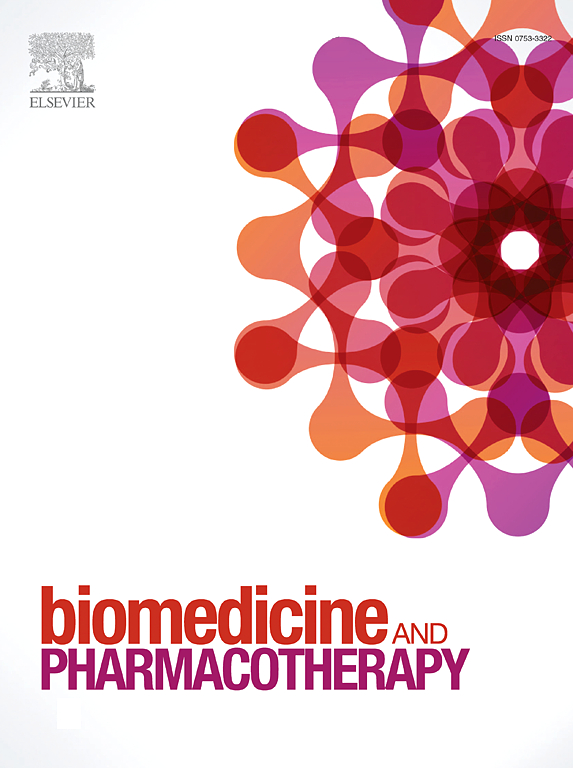Baicalin n-butyl ester alleviates inflammatory bowel disease and inhibits pyroptosis through the ROS/ERK/P-ERK/NLRP3 pathway in vivo and in vitro
IF 6.9
2区 医学
Q1 MEDICINE, RESEARCH & EXPERIMENTAL
引用次数: 0
Abstract
Background
Baicalin is a flavonoid extracted from dried roots of the plant Scutellariabaicalensis. Baicalin n-butyl ester (BNE) is a flavonoid obtained by esterification of baicalin and has anti-inflammatory and antioxidant effects.
Purpose
The therapeutic efficacy and potential mechanism of BNE in inflammatory bowel disease remain unclear. This study investigated the effects and underlying mechanisms of BNE in ulcerative colitis.
Methods
Dextran sulfate sodium (DSS) was used to construct a mouse model of ulcerative colitis, and mice were given intragastric administration of BNE. During the experiment, the changes of body weight and hematochezia of mice were observed. At the end of administration, the levels of inflammatory factors, colonic microbial changes and pyroptosis of colonic cells were measured. Mouse intestinal epithelial cells were stimulated by lipopolysaccharide/adenosine-5′-triphosphate to establish an in vitro model. ELISA, qRT-PCR and immunoblotting were used to explore the effect and mechanism of BNE on pyroptosis.
Results
In vivo, BNE drastically attenuated ulcerative colitis symptoms by relieving body weight loss, a decline in colon length, and destruction of colon tissue structure. BNE also reduced the secretion of pro-inflammatory cytokines, including IL-1β, IL-18, and TNF-α, and reactive oxygen species (ROS). Furthermore, 16S rRNA sequencing analyses of gut microbiota revealed that BNE reversed gut microbiota dysbiosis by reducing the abundance of unclassified-Clostridia-UCG-014 and increasing that of Lachnospiraceae. BNE also inhibited cell pyroptosis in mice with DSS-induced colitis. In vitro analyses showed that BNE decreased the secretion of IL-1β, IL-18, TNF-α, and ROS in lipopolysaccharide/adenosine-5′-triphosphate-stimulated mouse intestinal epithelial cells, and it inhibited pyroptosis mediated by oligomeric domain-like receptor protein 3 (NLRP3). Addition of ROS scavenger and ERK inhibitor further confirmed that BNE down-regulated ROS and inhibited the phosphorylation of ERK, thus inhibiting NLRP3-mediated cell pyroptosis. The magnetic beads pull-down assay showed that BNE had the capacity to bind directly to the ERK proteinin MODE-K cells.
Conclusion
BNE protects against colitis by increasing the abundance of Lachnospiraceae in vivo and suppressing pyroptosis via binding ERK protein and inhibiting ROS/ERK/P-ERK/NLRP3 in vivo and in vitro.
求助全文
约1分钟内获得全文
求助全文
来源期刊
CiteScore
11.90
自引率
2.70%
发文量
1621
审稿时长
48 days
期刊介绍:
Biomedicine & Pharmacotherapy stands as a multidisciplinary journal, presenting a spectrum of original research reports, reviews, and communications in the realms of clinical and basic medicine, as well as pharmacology. The journal spans various fields, including Cancer, Nutriceutics, Neurodegenerative, Cardiac, and Infectious Diseases.

 求助内容:
求助内容: 应助结果提醒方式:
应助结果提醒方式:


